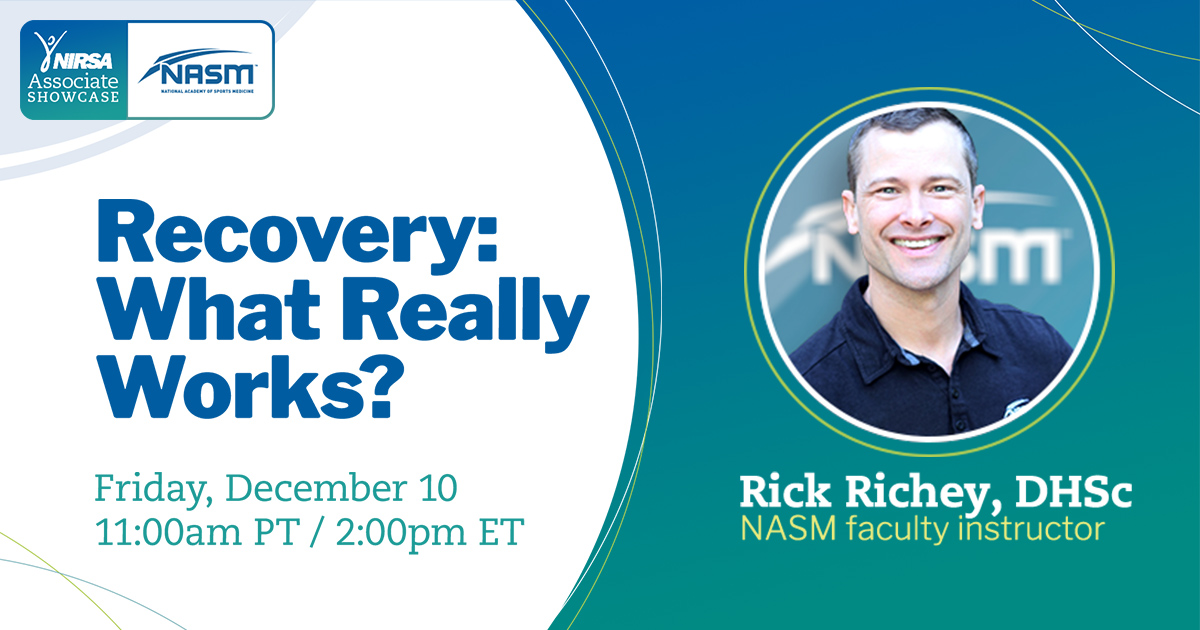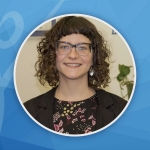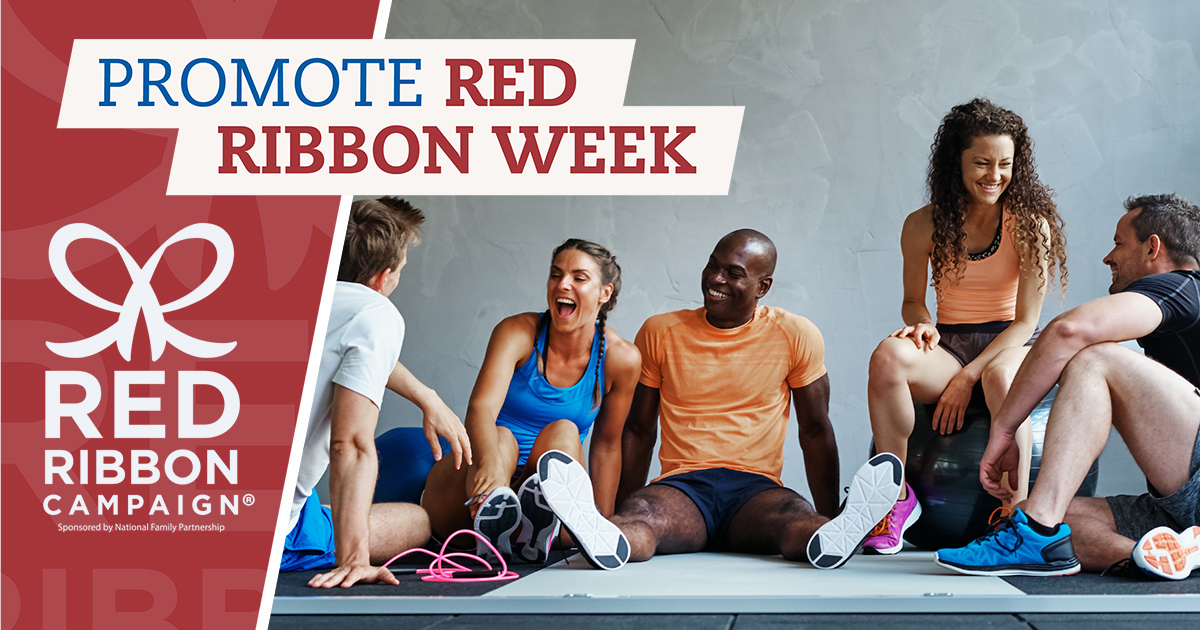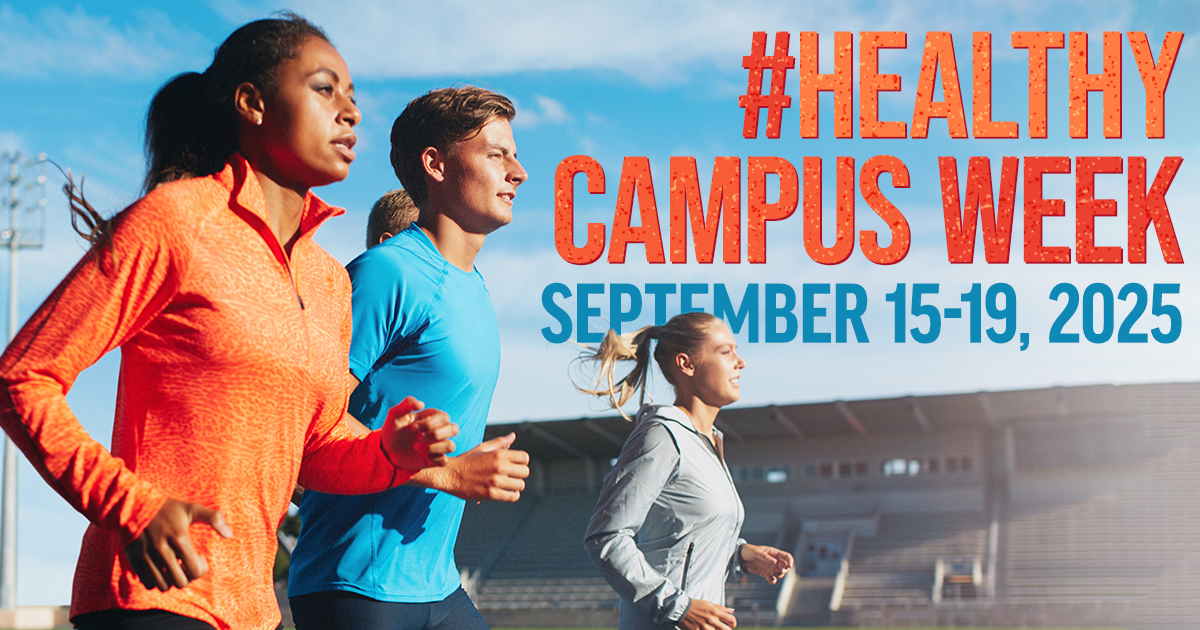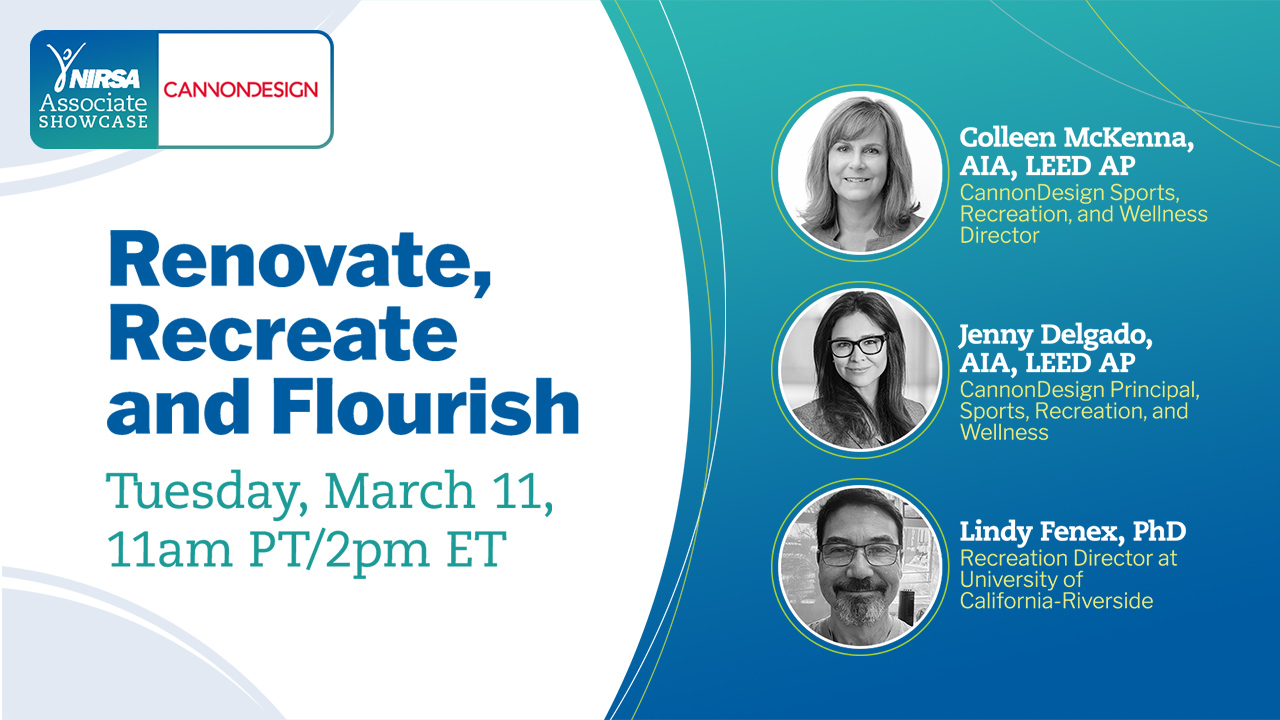Exercise and sleep. After an examination of multiple recovery modalities at the free December 10 NASM webinar “Recovery: What Really Works?”, these two emerged as crucial forces amid recovery efforts.
“So many of us for so long would look at lack of sleep as a badge of honor,” NASM Faculty Instructor Rick Richey, DHSc, said in the webinar. “I’m hoping that the badge of honor starts to shift toward people who got 7-8 hours of sleep.”
The webinar covers essential material for anyone looking for recovery methods that are cost effective, accessible, proactive, and doable in a campus rec setting. NIRSA members and nonmembers can view the recorded webinar for free by registering here.
Stress and inflammation
Body stress can be either damaging (distress) or beneficial (eustress), but both require recovery. Stress and inflammation after intense exercise can cause microtears and trauma that may lead to a cycle of cumulative injury. While our bodies typically can recover on their own, Rick explained there are ways to help the recovery process.
Recovery modalities
In the webinar, Rick explored various methods (and perceived methods) of recovery in depth. Top-of-mind methods like ice and heat come “on the cheap” in forms like ice bags, cold or hot showers, and heating pads, but fancier, expensive forms are becoming popular as well with the rise of saunas and cryotherapy chambers.
Hand-held tools for vibration and percussion have exponentially become available in the recovery market. Percussion treatments like massage guns (e.g., Theragun) are trending, but more studies are needed to examine the benefit of those tools. Foam rollers also come in vibrating forms, but recovery seems to be similar between the two.
Check out the webinar for Rick’s take on each of the above modalities, but keep in mind the best recovery tools out there: exercise and sleep.
Exercise and sleep
“This is the good stuff,” Rick said about exercise, noting it’s one of the absolute best tools for your body to fight stress and inflammation. While a hard workout may leave you sore, Rick cautioned it could also mean training’s been overdone. Instead, reframe hard “exercise” to increased “physical activity” overall.
“Regular physical activity, throughout the day, is vital,” he said, citing multiple studies regarding the benefits of physical activity in improving chronic inflammation and fighting atherosclerosis. Increased movement throughout the day has also shown effective for decreasing pain while increasing physical function in people with arthritis.
Improving quality of sleep goes hand-in-hand with increased movement. In the webinar, Rick said to think of sleep as “daily medication.” Lack of sleep is associated with a litany of negative health outcomes: high blood pressure, heart disease, depression, impaired memory, obesity, diabetes, stress, and compromised immunity.
Rick recommended keeping a sleep schedule, limiting electronic device use an hour before bed (and using blue blocker glasses), and reducing or eliminating alcohol.
“Alcohol helps you be unconscious, but the quality of sleep is far, far less, and you rarely go into deep sleep after alcohol use,” Rick said.
About NASM
National Academy of Sports Medicine (NASM) has been a NIRSA exhibitor since 2014. NASM provides Rec Prep programs along with the industry’s most-preferred credentials. Many of NASM’s campus rec partners find success with recruitment, hybrid delivery method, revenue, and professional development. Email Academic Partnerships at AcademicPartner@nasm.org for more information. You can also learn more from NASM and Rick by listening to “The NASM-CPT Podcast with Rick Richey.”
Kelley Hungerford is currently the Assistant Director of Expo & Corporate Relations at NIRSA.


